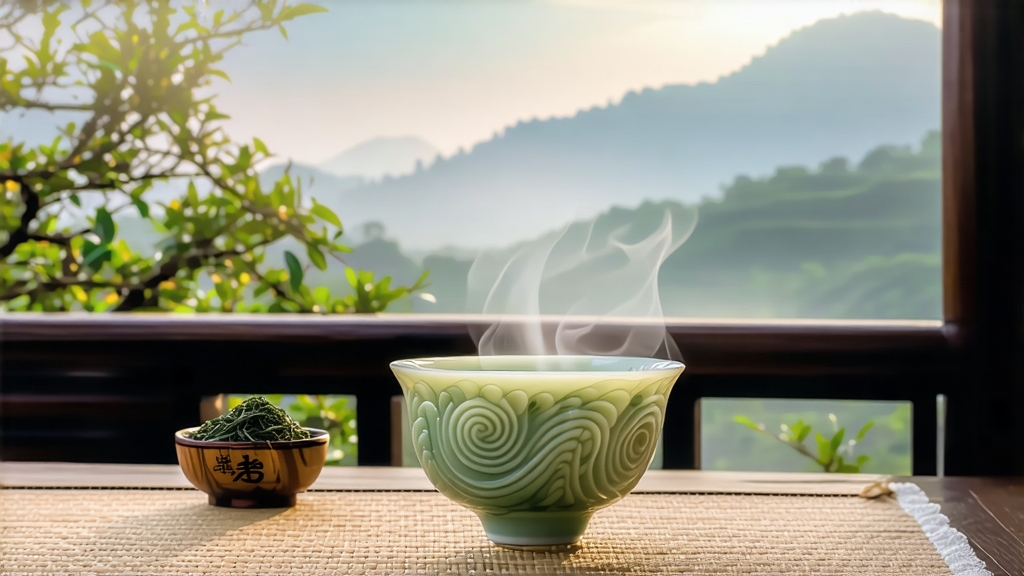
Tucked between the mist-laden cliffs of Dongting Mountain in Jiangsu Province and the vast mirror of Lake Tai, Biluochun—literally “Green Snail Spring”—has captivated Chinese emperors, poets, and now a growing circle of global tea lovers for more than a thousand years. What appears at first glance to be a tangle of tiny jade snails is in fact one of China’s most delicate green teas, a leaf so fragrant that locals once called it “Scary Fragrance” (Xia Sha Ren Xiang) because its perfume startled scholars mid-sentence. This article invites you to travel from Tang-dynasty monasteries to twenty-first-century tea bars, tracing the history, micro-terroirs, hand-craft, and brewing rituals that make Biluochun a master-class in Chinese green tea appreciation.
-
Historical vignettes: from palace tribute to Parisian cafés
Song dynasty chronicles first record tea picking on Dongting’s Dong and Xi hills, but the turning point came in 1699 when Kangxi Emperor visited Lake Tai. Court annals describe him being served a tea whose “curls resembled conch shells and whose scent rivaled ripe loquats.” Delighted, he renamed it Biluochun, fusing its snail-like shape with the spring season. For the next two centuries the entire crop was monopolized by imperial warehouses; only after the 1911 revolution did surplus leaves trickle to Suzhou tea shops. In 1954 Premier Zhou Enlai presented 500 g to Ho Chi Minh, cementing its diplomatic prestige, while the 1972 Nixon banquet menu featured Biluochun as the sole Chinese tea, introducing Western journalists to its apricot-like bouquet. Today certified Geographical Indication (GI) production is capped at roughly 110 tons per year, yet global demand has pushed boutique prices above USD 2,000 per kilogram for pre-Qingming grades, turning each steeping into liquid history. -
Micro-terroir: lake, mist, and fruit trees
Dongting Mountain is actually a pair of islands rising from a freshwater basin that moderates temperature and reflects ultraviolet light, creating a natural “soft-focus” for the tea bushes. Morning mist slows photosynthesis, raising amino acids—especially L-theanine—responsible for sweetness and umami. Unlike most Chinese tea gardens, Biluochun bushes are interplanted with peach, plum, and loquat trees; their roots share mycorrhizal fungi while petals shower the rows each March, imprinting a subtle floral note on the leaf. Soil is a sandy loam rich in magnesium and poor in calcium, forcing roots to struggle and concentrate flavor. Elevation ranges from 50 m to 200 m, but the slope angle can exceed 35°, making mechanization impossible and every leaf a hand-plucked artifact. -
Cultivars and grades: seven spirals of excellence
Although the GI zone allows any Camellia sinensis var. sinensis, three clonal lines dominate:
• Dongting Qunti (heirloom seed-grown, small leaf, intense orchid aroma)
• Fuding Dabaicha grafted stock (larger bud, higher yield, honey finish)
• Wuniuzao (“black cow early”), an early-sprouting mutant picked two weeks before Qingming, prized for its jade-white down.
Chinese commercial standards divide Biluochun into seven ascending grades: Supreme, Special-1, Special-2, Grade-1 to Grade-4. Supreme requires one bud plus an unopened leaf no longer than 2.5 cm, plucked before 10 a.m. when dew still glistens. A skilled picker gathers only 200 g per hour; 70,000 such sets produce one kilogram of finished tea. -
Crafting the spiral: withering, killing-green, rolling, and baking
Step 1: Solar withering on bamboo trays for 30–45 minutes removes surface moisture and initiates grassy-volatile conversion.
Step 2: “Killing-green” (shaqing) in drum pans set at 180 °C for 3–4 minutes deactivates polyphenol oxidase, locking in the jade hue. Masters listen for the “popcorn crackle” that signals perfect enzyme death.
Step 3: Rolling is performed while leaves are still 60 °C; fingers press and twist against the pan, curling the bud into